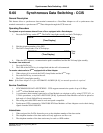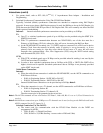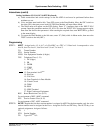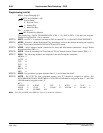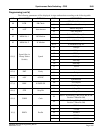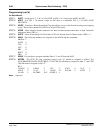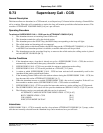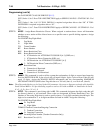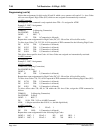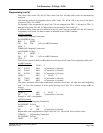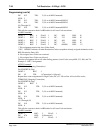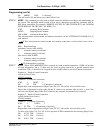
NEAX2400 IPX Feature Programming Manual
NDA-24297, Issue 1
Page 1031
Toll Restriction - 3/6-Digit - CCIS T-26
T-26 Toll Restriction - 3/6-Digit - CCIS
General Description
This feature allows the NEAX2400 IPX to restrict outgoing calls through CCIS according to specific Area and/or
Central Office codes. This restriction is determined on the basis of a three-digit Area Code or six-digit Area and
Office Code numbering plan.
Operating Procedure
No manual operation is required.
Service Conditions
1. The programmed restriction pattern can consist of codes to be allowed or codes to be restricted.
2. TOLL RESTRICTION - CCIS is assigned on a CLASS OF SERVICE - INDIVIDUAL [C-15] basis.
3. The system can be programmed to ignore digit “1” prefixing in an area code pattern.
4. When a toll call is denied, the calling party receives reorder tone. If desired, the calling party can be routed
to the ATTENDANT CONSOLE [A-3].
5. A Restriction table is assigned to each trunk group.
6. Tandem calling does not override TOLL RESTRICTION - 3/6-DIGIT - CCIS.
7. TOLL RESTRICTION - 3/6-DIGIT - CCIS is assigned on a TENANT [T-12] basis.
8. Through Dialing Feature: The Through Dialing feature does not override the Toll Restriction feature.
9. The Toll Restriction feature is assigned on a per-line Class of Service basis. When provided, the feature
is applicable on a per-trunk group basis.
Interactions
1. When Toll Restriction is specified in ARRC, all possible dialing patterns must be assigned in ATDP. If
office codes within an area code do not need to be restricted, allow the area code only. Always provide the
system with the most economical configuration of digits when constructing TOLL RESTRICTION tables.
2. In the ARRC command, ARI-A-RES must be programmed to allow two trunks and a station in a
conference. ARI-D-RES is programmed if the two trunks are to remain connected after the station drops
off or if TOLL RESTRICTION applies to a direct trunk-to-trunk connection such as a Tie line to DDD.
3. ROUTE ADVANCE [R-6] - Station A dials a toll call by accessing route 1. Route 1 is busy and advances
to route 2. Station A is restricted from making this call on route 2. The call will be restricted.
4. PASSING DIAL TONE [P-2] - The ATTENDANT CONSOLE [A-3] cannot use the PASSING DIAL
TONE feature to allow a TOLL RESTRICTED station to use a restricted route.
5. OUTGOING TRUNK QUEUING [O-2] - When a station is restricted from all other routes, a station may
use this feature to queue a trunk to complete a call over the unrestricted route(s).
6. LEAST COST ROUTING [L-5] - Transactions in AFRS must be such that the digits dialed in the trunk-
to-trunk connection should be recognizable in terms of choosing a route. If a route cannot be chosen,
TOLL RESTRICTION 3/6-DIGIT cannot be applied.
Programming
STEP 1: ASYD - SYS1, Index 75. Should the following commands be developed for Day/Night? 0/1: No/Yes.
Bit 0 - Developed ARSC command for Day/Night?
Bit 3 - Develop ATDP command for Day/Night?



